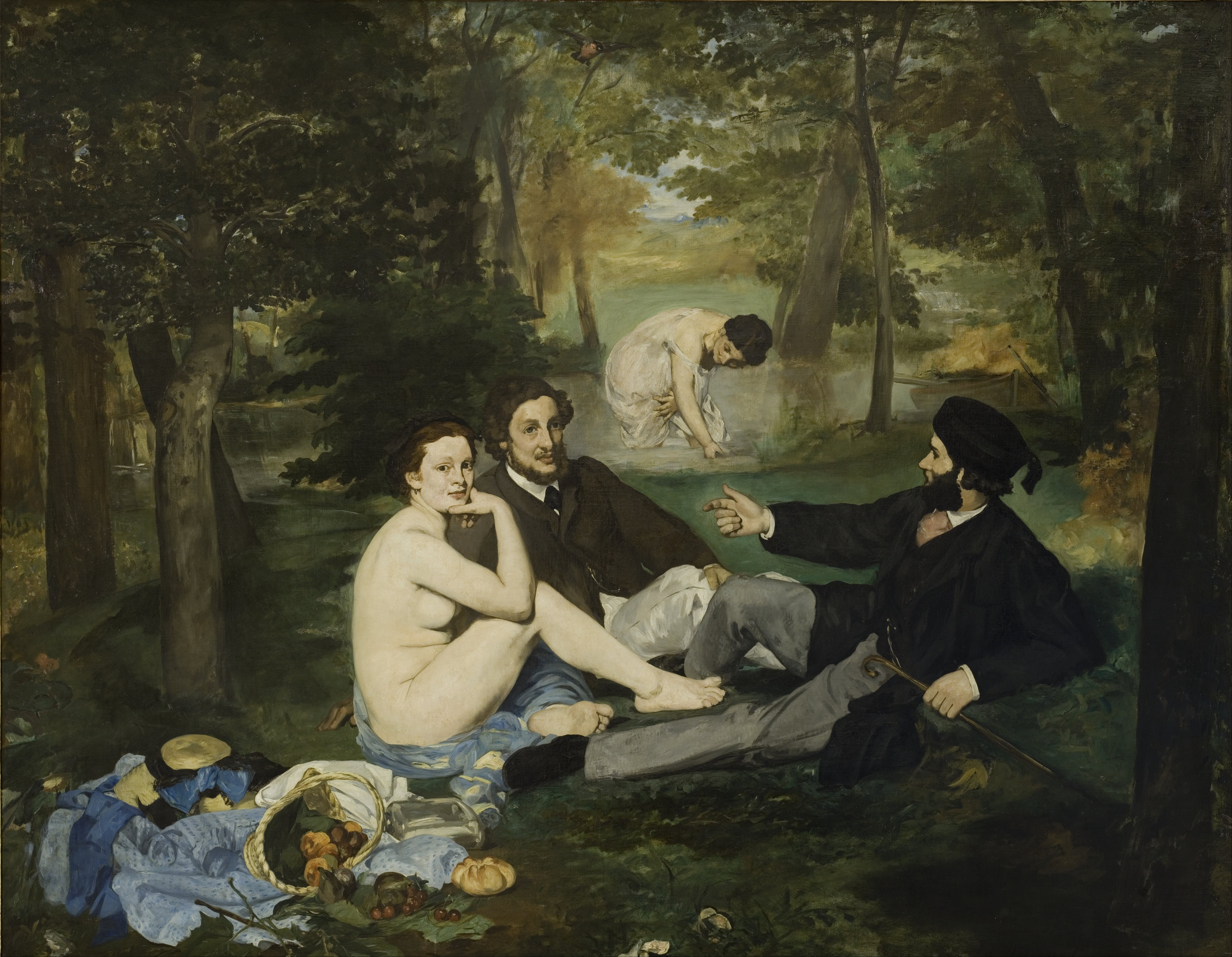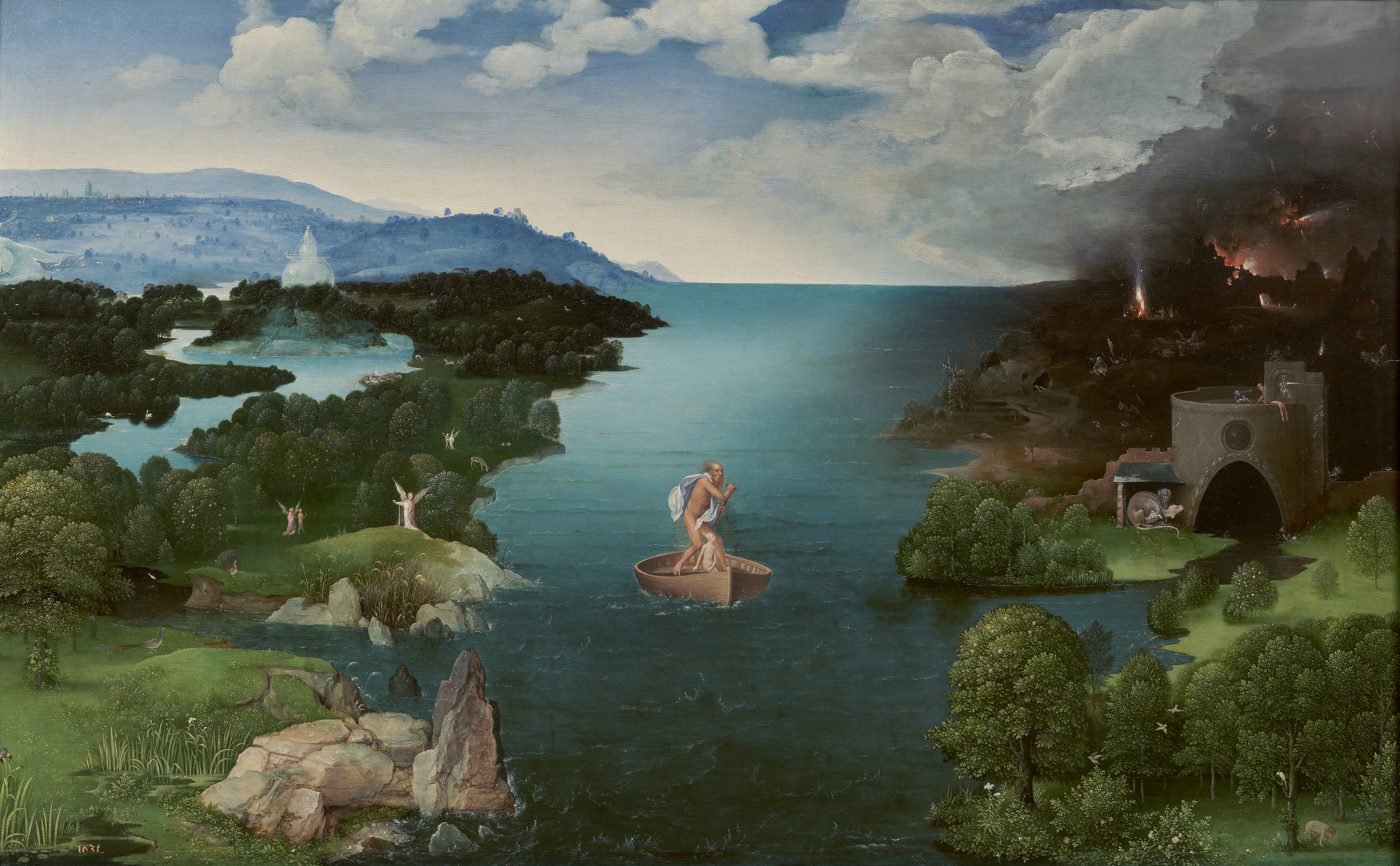|
Ink Wash
Ink wash painting ( zh, t=水墨畫, s=水墨画, p=shuǐmòhuà) is a type of Chinese ink brush painting which uses washes of black ink, such as that used in East Asian calligraphy, in different concentrations. It emerged during the Tang dynasty of China (618–907), and overturned earlier, more realistic techniques. It is typically monochrome, using only shades of black, with a great emphasis on virtuoso brushwork and conveying the perceived "spirit" or "essence" of a subject over direct imitation. Ink wash painting flourished from the Song dynasty in China (960–1279) onwards, as well as in Japan after it was introduced by Zen Buddhist monks in the 14th century. Some Western scholars divide Chinese painting (including ink wash painting) into three periods: times of representation, times of expression, and historical Oriental art. Chinese scholars have their own views which may be different; they believe that contemporary Chinese ink wash paintings are the pluralistic continuat ... [...More Info...] [...Related Items...] OR: [Wikipedia] [Google] [Baidu] |
Liang Kai
Liang Kai (; ''c''. 1140 - ''c''. 1210) was a Chinese painter of the Southern Song Dynasty. He was also known as Madman Liang because of his very informal pictures. He was born in Shandong and worked in Lin An (later Hangzhou). He is known to have studied with the master Jia Shigu. He was awarded the rank of Painter-in-Attendance at the court of Jia Tai (1201-1204 CE, Southern Song Dynasty) where he was known for mastery in painting figures, landscapes, and other minor subjects. He was also awarded the Golden Belt, however he left it behind when he left his position at court to practise Zen, Chan Buddhism. Painting style Liang Kai is most famous for originating or developing the "Xie Yi" (sometimes translated as "sketch style") of painting, where the objective is to evoke the subject or atmosphere with minimal use of detail; it requires a profound mastery of painting technique and perfect concentration, but also allows for the beauty of accidental effects. The Xie Yi style is cl ... [...More Info...] [...Related Items...] OR: [Wikipedia] [Google] [Baidu] |
Zhejiang Academy Of Fine Arts
The China Academy of Art (CAA; ) is a provincial public college of fine arts in Hangzhou. Zhejiang, China. It is affiliated with the Province of Zhejiang. The academy is part of the Double First-Class Construction The World First-Class Universities and First-Class Academic Disciplines Construction (), together known as Double First-Class Construction (), is a higher education development and sponsorship scheme of the Chinese central government, initiated .... References External linksChina Academy of Art – official website in English {{DEFAULTSORT:China Academy of Art Art schools in China Universities and colleges in Hangzhou Architecture schools in China Universities and colleges in Shanghai 1928 establishments in China ... [...More Info...] [...Related Items...] OR: [Wikipedia] [Google] [Baidu] |
Impressionism
Impressionism was a 19th-century art movement characterized by visible brush strokes, open Composition (visual arts), composition, emphasis on accurate depiction of light in its changing qualities (often accentuating the effects of the passage of time), ordinary subject matter, unusual visual angles, and inclusion of movement as a crucial element of human perception and experience. Impressionism originated with a group of Paris-based artists whose independent exhibitions brought them to prominence during the 1870s and 1880s. The Impressionists faced harsh opposition from the conventional art community in France. The name of the style derives from the title of a Claude Monet work, ''Impression, soleil levant'' (''Impression, Sunrise''), which provoked the critic Louis Leroy to coin the term in a Satire, satirical 1874 review of the First Impressionist Exhibition published in the Parisian newspaper ''Le Charivari''. The development of Impressionism in the visual arts was soon foll ... [...More Info...] [...Related Items...] OR: [Wikipedia] [Google] [Baidu] |
Hasegawa Tohaku - Pine Trees (Shōrin-zu Byōbu) - Right Hand Screen
Hasegawa (written: 長谷川 literally "long valley river") is a Japanese surname. Hasegawa may refer to: People A * Akiko Hasegawa, Japanese voice actress and singer * Ariajasuru Hasegawa (born 1988), Japanese-Iranian footballer B * Bob Hasegawa (born 1952), American-born labor union leader and Washington State congressperson C * Chiyono Hasegawa (1896–2011), Japanese supercentenarian D * Daigo Hasegawa (born 1990), Japanese athlete specialising in the triple jump E * Emi Hasegawa (born 1986), Japanese alpine ski racer H * Haruhisa Hasegawa (born 1957), Japanese football player * Haruko Hasegawa (1895–1967), Japanese painter * Hasegawa Katsutoshi (born 1944), Japanese sumo wrestler * Hasegawa Nyozekan (1875–1969), author * Hasegawa Tōhaku (1539–1610), Edo period painter * Hasegawa Yoshimichi (1850–1924), Chief of the Army General Staff * Hatsunori Hasegawa (born 1955), Japanese actor * Hirokazu Hasegawa (born 1986), former Japanese fo ... [...More Info...] [...Related Items...] OR: [Wikipedia] [Google] [Baidu] |
Li Cheng, Luxuriant Forest Among Distant Peaks
Li, li, or LI may refer to: Businesses and organizations * Landscape Institute, a British professional body for landscape architects * Leadership Institute, a non-profit organization located in Arlington, Virginia, US, that teaches "political technology." * Li Auto (Nasdaq: LI), a Chinese manufacturer of electric vehicles * Liberal International, a political federation for liberal parties * Linux International, an international non-profit organization * Lyndon Institute, an independent high school in the U.S. state of Vermont * The Light Infantry, a British Army infantry regiment Names * Li (surname), including: ** List of people with surname Li ** Li (surname 李), one of the most common surnames in the world ** Li (surname 黎), the 84th most common surname in China ** Li (surname 栗), the 249th most common surname in China ** Li (surname 利), the 299th most common surname in China ** Li (surname 厉), a Chinese surname ** Li (surname 郦), a Chinese surname * Li Ande ... [...More Info...] [...Related Items...] OR: [Wikipedia] [Google] [Baidu] |
Shan Shui
''Shan shui'' (; pronounced ) refers to a style of traditional Chinese painting that involves or depicts scenery or natural landscapes, using a brush and ink rather than more conventional paints. Mountains, rivers and waterfalls are common subjects of ''shan shui'' paintings. History ''Shan shui'' painting first began to develop in the 5th century, in the Liu Song dynasty.''Textual Evidence for the Secular Arts of China in the Period from Liu Sung through Sui'' (1967) by Alexander Soper It was later characterized by a group of landscape painters such as Zhang Zeduan, most of them already famous, who produced large-scale landscape paintings. These landscape paintings usually centered on mountains. Mountains had long been seen as sacred places in China, which were viewed as the homes of immortals and thus, close to the heavens. Philosophical interest in nature, or in mystical connotations of naturalism, could also have contributed to the rise of landscape painting. The ... [...More Info...] [...Related Items...] OR: [Wikipedia] [Google] [Baidu] |
Landscape Painting
Landscape painting, also known as landscape art, is the depiction in painting of natural scenery such as mountains, valleys, rivers, trees, and forests, especially where the main subject is a wide view—with its elements arranged into a coherent Composition (visual arts), composition. In other works, landscape backgrounds for figures can still form an important part of the work. Sky is almost always included in the view, and weather is often an element of the composition. Detailed landscapes as a distinct subject are not found in all artistic traditions, and develop when there is already a sophisticated tradition of representing other subjects. Two main traditions spring from Western painting and Chinese art, going back well over a thousand years in both cases. The recognition of a spiritual element in landscape art is present from its beginnings in East Asian art, drawing on Daoism and other philosophical traditions, but in the West only becomes explicit with Romanticism. L ... [...More Info...] [...Related Items...] OR: [Wikipedia] [Google] [Baidu] |
Qianlong
The Qianlong Emperor (25 September 17117 February 1799), also known by his temple name Emperor Gaozong of Qing, personal name Hongli, was the fifth emperor of the Qing dynasty and the fourth Qing emperor to rule over China proper. He reigned officially from 1735 until his abdication in 1796, but retained ultimate power subsequently until his death in 1799, making him one of the longest-reigning monarchs in history as well as one of the longest-lived. The fourth and favourite son of the Yongzheng Emperor, Qianlong ascended the throne in 1735. A highly ambitious military leader, he led a series of campaigns into Inner Asia, Burma, Nepal and Vietnam and suppressed rebellions in Jinchuan and Taiwan. During his lifetime, he was given the deified title Emperor Manjushri by the Qing's Tibetan subjects. Domestically, Qianlong was a major patron of the arts as well as a prolific writer. He sponsored the compilation of the '' Siku Quanshu'' (''Complete Library of the Four Treasuri ... [...More Info...] [...Related Items...] OR: [Wikipedia] [Google] [Baidu] |
Seal (East Asia)
In the Sinosphere, seals (Seal (emblem), stamps) can be applied on objects to establish personal identification. They are commonly applied on items such as personal documents, office paperwork, contracts, and art. They are used similarly to signatures in the West. Unlike in the West, where Seal (emblem), wax seals are common, Sinosphere seals are used with ink. Of Chinese origin, the process soon spread beyond China and across East and Southeast Asia. Various countries in these regions currently use a mixture of seals and hand signatures, and, increasingly, electronic signatures. Chinese seals are typically made of Rock (geology), stone, sometimes of metals, wood, bamboo, plastic, or ivory, and are typically used with red ink or cinnabar paste ( zh, c=朱砂, p=zhūshā). The word 印 ("yìn" in Mandarin, "in" in Japanese and Korean, "ấn" and "in" in Vietnamese) specifically refers to the imprint created by the seal, as well as appearing in combination with other morphemes i ... [...More Info...] [...Related Items...] OR: [Wikipedia] [Google] [Baidu] |
Handscroll
The handscroll is a long, narrow, horizontal scroll format in East Asia used for calligraphy or paintings. A handscroll usually measures up to several meters in length and around 25–40 cm in height. Handscrolls are generally viewed starting from the right end. This kind of scroll is intended to be read or viewed flat on a table, in sections. The format thus allows for the depiction of a continuous narrative or journey.Delbanco, Dawn (2008)"Chinese Handscrolls" In ''Heilbrunn Timeline of Art History''. New York: The Metropolitan Museum of Art. Retrieved 24 September 2011. The traditional alternative format in East Asian paintings is the vertical hanging scroll, which is rarely as long. History According to the National Palace Museum in Taipei, the handscroll format originated with ancient Chinese text documents. From the Spring and Autumn period (770–481 BC) through the Han dynasty (206 BC – 220 AD), bamboo or wooden slips were bound together and used to write texts o ... [...More Info...] [...Related Items...] OR: [Wikipedia] [Google] [Baidu] |
Hanging Scroll
A hanging scroll is one of the many traditional ways to display and exhibit East Asian painting and calligraphy. They are different from handscrolls, which are narrower and designed to be viewed flat on a table. Hanging scrolls are generally intended to be displayed for short periods of time, after which they are rolled up and tied for storage. They are traditionally rotated according to season or occasion, rather than be on permanent display. Their artwork could be mounted with decorative brocade silk borders. The craft of creating a hanging scroll is considered an art in itself. History Scrolls originated in their earliest form from texts written on Bamboo and wooden slips, bamboo strips and silk banners across ancient China. The earliest hanging scrolls are related to and developed from silk banners in early Chinese history. These banners were long and hung vertically on walls. Such silk banners and hanging scroll paintings were found at Mawangdui dating back to the Han dyna ... [...More Info...] [...Related Items...] OR: [Wikipedia] [Google] [Baidu] |







